1. Curriculum aims & objectives
1.1. Technology over time
1.2. Select appropriate technologies to use.
1.3. How to approach technology problems with a range of solutions.
1.4. Technology and how it affects personal health and well being.
2. Bands: the overview of content in each level.
2.1. Foundation to year 2
2.1.1. identify difference between real world and virtual world; people and products; and resources and environments.
2.2. Years 3 and 4
2.3. Years 5 and 6
2.4. Years 7 and 8
2.5. Years 9 and 10
3. Content descriptions: describes knowledge, understanding and skills expected to be taught.
4. Content elaborations: support material and exemplars.
5. Achievement standards: quality of learning and what students should be achieving at each level.
6. Student diversity
6.1. Students with disability
6.1.1. can adjust learning with use of extended general capabilities learning continua in Literacy, Numeracy and personal and social capability.
6.2. English as a second language or dialect
6.2.1. Additional support for teachers: English as an additional language or dialect: Teacher resource.
6.3. Gifted and talented students
6.3.1. Use higher order thinking and/or focus on cross-curriculum priorities.
6.3.2. Draw on later band levels.
7. Links to other learning areas
7.1. English
7.1.1. describe objects and events
7.1.2. interpret descriptions
7.1.3. read and give instructions
7.1.4. generate and explore ideas with others
7.1.5. write design briefs and specifications
7.1.6. marketing texts
7.1.7. evaluation and variation reports
7.1.8. group discussions
7.2. Mathematics
7.2.1. process data using simple tables, lists, picture graphs, simple column graphs and line graphs.
7.2.2. scatter plots, linear graphs and he gradient of graphs.
7.2.3. use of metric units and conversion between them.
7.2.4. comparing graphs
7.2.5. solve problems using linear equations.
7.3. Science
7.3.1. biological, chemical and physical sciences
7.3.2. engagement with authentic projects
7.3.3. collection, storage ad analysis of authentic scientific data
7.3.4. interacting with simulations
7.4. History
7.4.1. technology has developed through gradual accumulation of knowledge
7.5. Geography
7.5.1. find patterns and interact with digital systems to develop spatial understandings
7.5.2. create products and systems that assist in the understanding of climate and weather conditions.
7.6. The Arts
7.6.1. line, shape, form, colour, texture, proportion and balance incorperated when students design products and environments.
7.6.2. use digital technologies to tell stories, represent and communicate ideas
7.7. Health and Physical Education
7.7.1. explore how systems wok together o produce energy and movement.
8. Strands
8.1. knowledge and understanding
8.1.1. design and technologies
8.1.1.1. use, development and impact of technology on life
8.1.1.2. design concepts
8.1.2. Digital technologies
8.1.2.1. data representation and symbolic structure
8.1.2.2. software, hardware and networks
8.1.2.3. use, development and impact of info. systems on lives
8.2. Processes and production skills
8.2.1. design and technologies
8.2.1.1. needs or opportunites
8.2.1.2. develop ideas for designed solutions
8.2.1.3. make and evaluate designed solutions
8.2.2. digital technologies
8.2.2.1. collecting and interpreting data and nature of properties of data
8.2.2.2. use range of digital systems
8.2.2.3. identify problems and implement solutions
8.2.2.4. communicating online and interacting safely and spporpriately
9. Key ideas
9.1. Students create and design solutions to meet present needs without compromising the future.
9.2. Project management: students are aware that they are accountable for their designs and solutions. (Health and safety)
10. Cross-curriculum priorities: embedded in curriculum.
10.1. sustainability
10.1.1. anticipating and balancing economic, environmental and social impacts.
10.1.2. create more sustainable patterns for living.
10.1.3. develop skills to choose technologies and systems with regard to cost and benefits.
10.2. Aboriginal and Torres Strait Islander histories and cultures
10.2.1. technologies employed by Aboriginal and Torres Strait Islander peoples in past, present and future.
10.2.2. world's first and most continuous culture often developed through intimate knowledge of country/place and culture.
10.2.3. Explore interconnectedness
10.3. Asia and Australia's engagement with Asia
10.3.1. recognize interaction create need for creative solutions and collaboration with others.
10.3.2. explore traditional, contemporary and emerging technological achievements in Asia.
10.3.3. examine contribution of Asia to technological advances.
